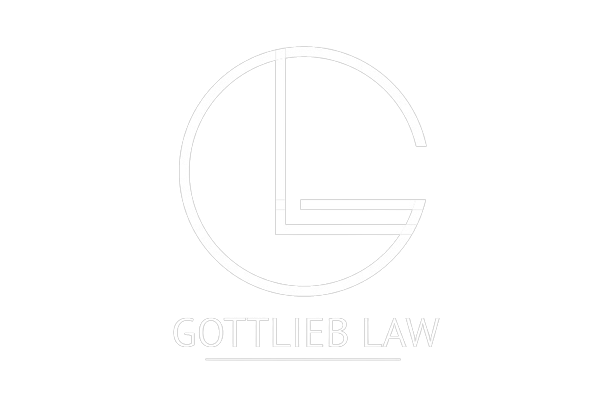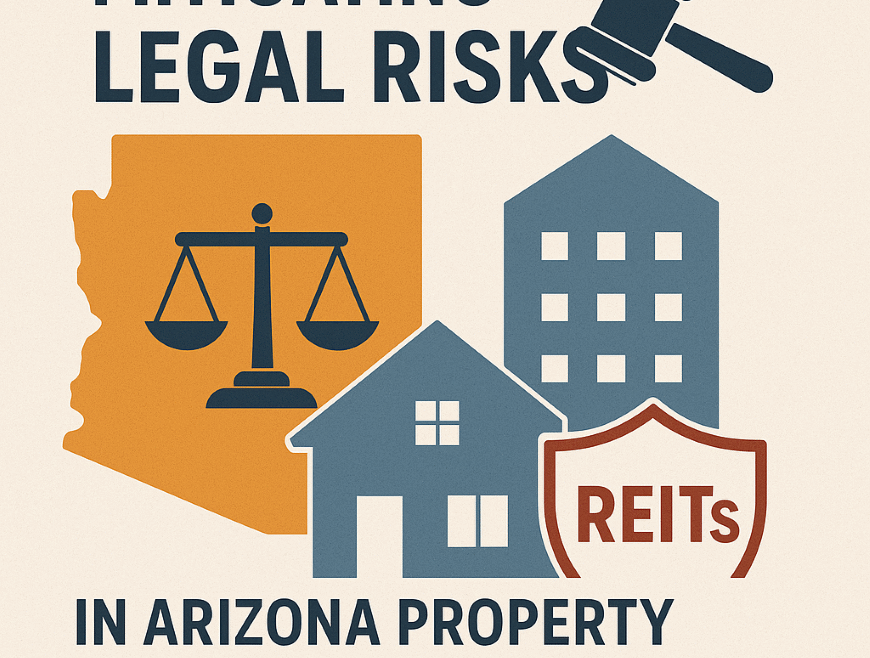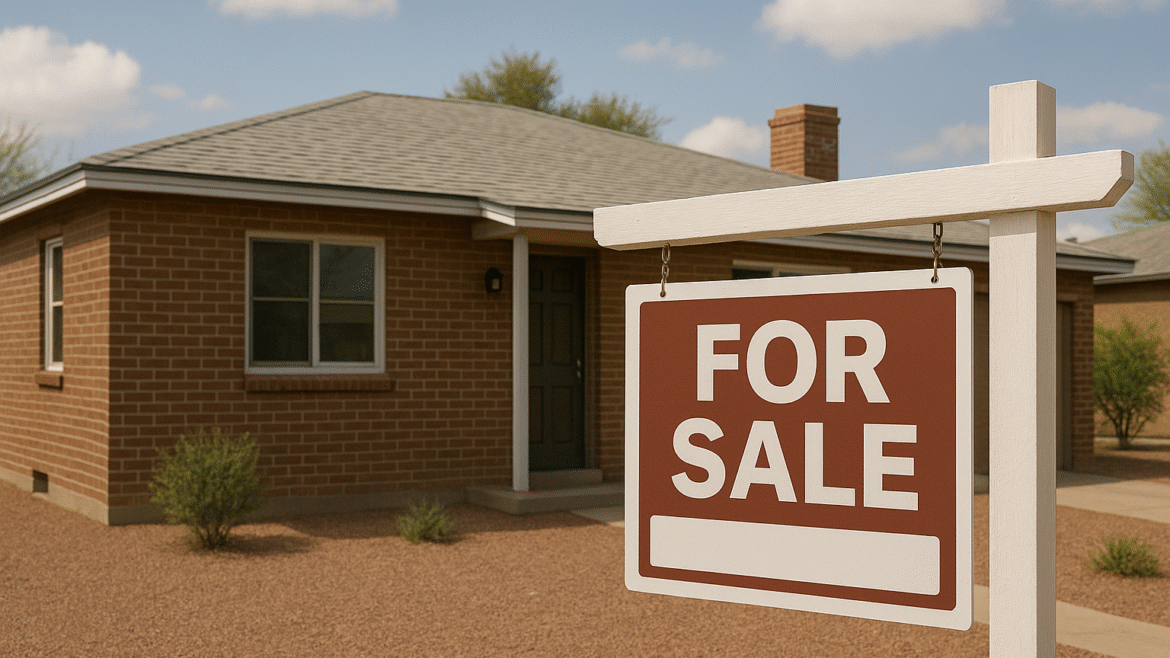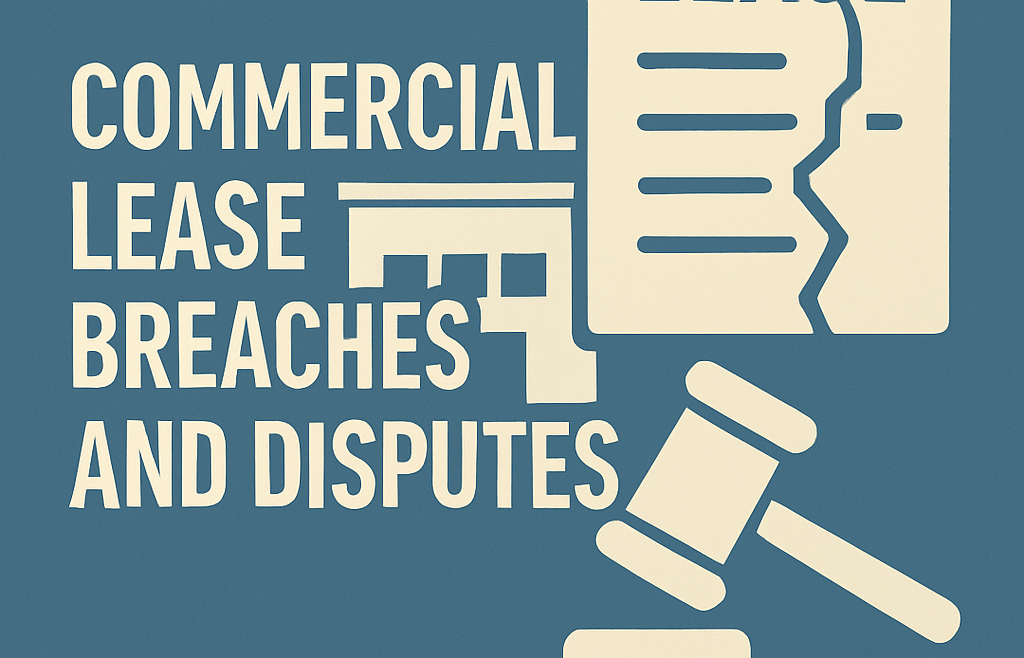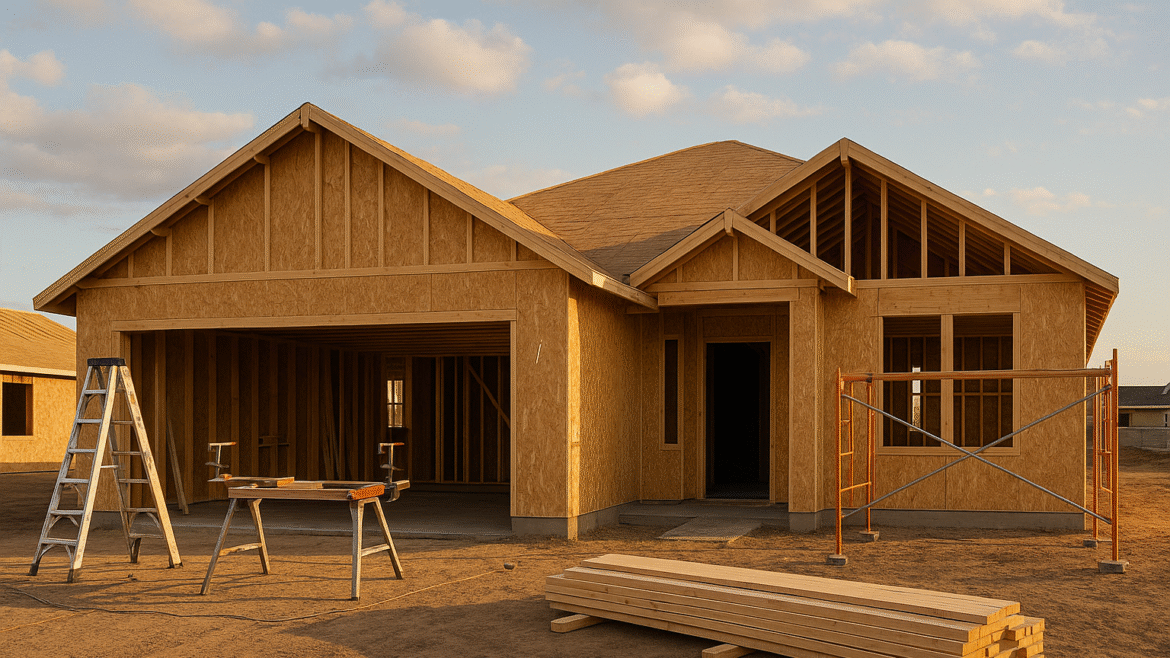Gottlieb Law, PLC provides this article for information purposes only and nothing herein creates an attorney-client relationship. You should not take any action in reliance on any of the information contained herein without consulting with qualified legal counsel first and reading this article is not a proper substitute for seeking legal advice of your specific situation. Laws change over time and you should seek counsel to discuss any specific legal questions.
An SNDA isn’t just legal jargon buried in the fine print — it’s a vital agreement that can mean the difference between business continuity and unexpected disruption. Whether you’re a commercial tenant investing heavily in your space or a landlord securing financing, understanding the dynamics of Subordination, Non-Disturbance, and Attornment (SNDA) is essential. These agreements set the rules for what happens to your lease if the property changes hands or the landlord defaults on a loan — balancing the sometimes competing interests of tenants, landlords, and lenders.
In this article, we take a closer look at two critical components of every SNDA: subordination and attornment. You’ll see how these provisions work together to protect a lender’s priority while ensuring your lease can survive a foreclosure. More importantly, you’ll learn why negotiating clear, fair terms is a strategic advantage for all parties — and how Gottlieb Law can help you secure your lease rights with confidence. Read on to protect your lease, safeguard your business, and negotiate from a position of strength.
The Role of SNDA Agreements
Commercial leasing is often more than just signing a lease and paying rent. Hidden in the fine print are agreements that safeguard all parties involved—landlords, tenants, and lenders—against potential risks. A critical yet often underappreciated document in commercial leasing is the Subordination, Non-Disturbance, and Attornment Agreement (SNDA). This comprehensive legal safeguard plays a pivotal role in defining the relationship between tenants, landlords, and lenders when ownership shifts or financial difficulties arise.
Why SNDA Agreements Are Essential
An SNDA agreement establishes a legal framework to address what happens to a tenant’s lease in challenging scenarios, such as foreclosure or property sale. While tenants typically focus on rent, terms, and renewal clauses, the SNDA ensures their right to remain in the leased space isn’t jeopardized by external circumstances beyond their control. Without it, tenants face uncertainty that could disrupt their operations, putting their businesses at risk.
An SNDA serves three key functions, each reflected in its main components:
- Subordination: Establishes that a tenant’s lease holds a lower priority compared to the lender’s mortgage. This provision ensures the lender’s interests come first, often as a condition for financing the property.
- Non-Disturbance: Provides reassurance to tenants that, even in the event of foreclosure, they can continue their lease without interruption.
- Attornment: Ensures tenants honor their lease terms with a new property owner, maintaining stability even if ownership changes hands.
Together, these clauses balance the interests of all parties involved, protecting the lender’s financial investment, the landlord’s property value, and the tenant’s business operations.
A Vital Tool for Stability
For landlords, an SNDA agreement is often necessary to secure financing or refinancing. For lenders, it provides peace of mind that their investment is protected and tenants will continue honoring their leases. For tenants, it ensures business continuity—a critical factor for commercial operations that rely on predictable costs and uninterrupted access to their leased space.
SNDA agreements are especially significant in long-term leases or leases tied to specialized spaces, like retail outlets, restaurants, or industrial facilities. The stakes are high for these tenants, who may have invested heavily in customizing their space or building a customer base in a specific location. A well-negotiated SNDA helps ensure that tenants aren’t left in limbo during ownership transitions or foreclosure proceedings.
Spotlighting Subordination and Attornment
While the non-disturbance clause is often highlighted for its tenant protections, the subordination and attornment provisions are equally critical. These elements work together to protect the lender’s interests while ensuring the tenant remains operational. Subordination adjusts the lease’s priority relative to the lender’s mortgage, and attornment obligates the tenant to recognize a new owner as their landlord, ensuring continuity.
Understanding the finer points of subordination and attornment is essential for any commercial tenant seeking to protect their rights. These provisions, when negotiated effectively, can provide a layer of stability in an otherwise unpredictable leasing landscape.
What Is Subordination in an SNDA Agreement?
Subordination refers to the tenant agreeing that their lease will rank below the lender’s mortgage in terms of priority. If the property is foreclosed, the lender’s claim to the property takes precedence over the tenant’s lease rights unless the SNDA includes a non-disturbance clause. This clause ensures the tenant can continue operating without interruption, even in the event of foreclosure.
Why Subordination Exists
Lenders often require subordination because a commercial mortgage represents a significant financial investment. They need assurance that their interest in the property will take priority over existing leases, giving them confidence that they can recover their investment in case of default. For landlords, agreeing to subordination facilitates obtaining or refinancing loans, as lenders are more willing to provide funding when their rights take precedence over tenant agreements.
Subordination is also essential for maintaining the property’s financial viability. Without subordination, a lender might hesitate to extend financing, potentially jeopardizing the landlord’s ability to maintain or improve the property, which could indirectly affect tenants as well.
Tenant Implications
While subordination might initially seem like a disadvantage for tenants, it is a standard practice in most commercial leases and part of the give-and-take required to secure space in a competitive market. When paired with a strong non-disturbance clause, subordination becomes less concerning, as tenants gain a measure of protection for their leasehold rights even in a foreclosure scenario. This combination reassures tenants that they can continue their business operations with minimal disruption, regardless of ownership changes.
Negotiating Favorable Subordination Terms
For tenants, it’s critical to approach subordination with careful consideration to ensure their interests are protected. Here are key steps to negotiating favorable terms:
- Verify non-disturbance protections: Always confirm the agreement includes a non-disturbance clause explicitly safeguarding your right to remain in the property.
- Clarify lease continuation terms: Make sure the agreement outlines what will happen to your lease obligations during and after foreclosure. This includes rent amounts, renewal options, and maintenance responsibilities.
- Consult legal counsel: Partnering with an experienced real estate attorney is essential for reviewing and negotiating the terms of subordination. An attorney can help ensure the agreement balances the tenant’s rights with the lender’s requirements.
Balancing Risks and Opportunities in Subordination
Subordination doesn’t just protect lenders—it can benefit tenants indirectly by enabling landlords to secure financing that keeps the property well-maintained and competitive. For example, a landlord might use refinancing to upgrade shared amenities or improve building infrastructure, which can enhance the tenant’s experience and attract more customers to retail spaces.
Tenants should approach subordination as an opportunity to strengthen their lease protections. By negotiating a comprehensive SNDA agreement with robust non-disturbance clauses and clear continuation terms, tenants can mitigate the risks associated with subordinating their lease while ensuring their interests remain intact.
Connecting Subordination and Attornment in Practice
Subordination and attornment are two essential components of an SNDA agreement, each serving distinct yet complementary purposes. Together, they create a legal safety net that balances the often-competing interests of lenders and tenants while ensuring the property remains viable and functional, even in challenging circumstances. Understanding how these provisions interact is crucial for tenants looking to protect their leasehold rights without hindering the landlord’s ability to secure financing.
How Subordination and Attornment Interact
- Subordination: This clause gives lenders the assurance that their mortgage takes precedence over the tenant’s lease in the property’s legal hierarchy. In practice, subordination allows landlords to access financing or refinancing opportunities critical to maintaining or upgrading the property.
- Attornment: While subordination prioritizes the lender’s interests, attornment safeguards tenants. It requires the tenant to acknowledge and honor their lease with any new property owner, such as a lender who takes control after foreclosure. Attornment protects tenant stability by ensuring lease continuity even when ownership shifts.
When these provisions are included in an SNDA agreement alongside a non-disturbance clause, they provide a balance of security and predictability for all parties involved. Subordination protects the lender’s financial interests, while attornment ensures tenants are not left in a precarious position should the property change hands.
Real-World Scenarios of Subordination and Attornment
- Multi-Tenant Office Building: A tenant leasing space in a busy office building agrees to subordinate their lease to the landlord’s mortgage as part of the SNDA agreement. In exchange, the tenant secures a non-disturbance clause that ensures their lease remains intact even if the landlord defaults. When the lender takes control of the property after foreclosure, the tenant honors the lease terms with the lender, as outlined in the attornment clause. This arrangement allows the tenant to maintain uninterrupted business operations while preserving the property’s leasing income for the lender.
- Retail Tenant in a Mixed-Use Development: A retail tenant negotiates a detailed SNDA agreement with specific subordination terms to support the landlord’s financing. By doing so, they help facilitate property upgrades that enhance the overall development. At the same time, the tenant ensures attornment provisions are in place, guaranteeing their lease continues seamlessly if a new owner takes over. This confidence allows the tenant to invest in the space, such as through renovations or marketing efforts, knowing their lease rights are protected.
Why Subordination and Attornment Are a Strategic Pair
The interplay between subordination and attornment within an SNDA agreement creates a win-win scenario for lenders and tenants. For lenders, these provisions safeguard their investments by ensuring a clear chain of priority and uninterrupted rental income. For tenants, the combination of subordination and attornment—particularly when paired with a non-disturbance clause—provides reassurance that their lease rights will remain intact, even in unpredictable circumstances like foreclosure or property sales.
Through understanding how subordination and attornment work together, commercial tenants can negotiate agreements that minimize their risks while fostering a mutually beneficial relationship with landlords and lenders.
Key Takeaways for Tenants Reviewing SNDA Agreements
Navigating an SNDA agreement can feel overwhelming, but it’s essential for securing your leasehold rights and ensuring business continuity. A well-crafted agreement not only protects your investment in the leased property but also positions you to thrive even during ownership changes or financial disruptions.
When reviewing an SNDA agreement, tenants should focus on subordination and attornment clauses, understanding their implications, and leveraging legal knowledge to negotiate terms that reflect their specific needs. Here’s how:
Your Checklist for SNDA Agreement Review
- Understand Subordination’s Impact: Subordination doesn’t inherently disadvantage tenants, but it does place the lease below the lender’s mortgage in priority. To mitigate this, ensure the SNDA agreement includes a strong non-disturbance clause. This clause can ensure that your lease rights remain intact, even in foreclosure scenarios, so you can continue your operations without disruption.
- Negotiate Attornment Terms: Attornment provisions secure continuity in lease obligations with any future property owners, such as a lender or new landlord. Review these clauses carefully to confirm they protect your rights while ensuring you maintain the same lease terms, such as rent, renewal options, and property access.
- Consult Legal Counsel Early: Real estate attorneys play a vital role in SNDA negotiations. They can identify vague language, highlight potential risks, and ensure your lease reflects a balanced agreement. A proactive legal review ensures that your business interests are well-represented, offering peace of mind for the long term. SNDAs should not be negotiated without qualified counsel.
Insights to Strengthen Your Position
Beyond the basics, here are a few advanced considerations for tenants:
- Request Specific Non-Disturbance Terms: While many agreements include non-disturbance clauses, the details matter. Specify that your lease will survive under the exact same terms post-foreclosure, ensuring there’s no ambiguity about your rights or obligations.
- Address Unique Situations: If your business relies heavily on location (e.g., a retail store), consider adding provisions that prioritize maintaining property conditions or access rights under new ownership.
- Seek Favorable Lease Continuation Terms: Tenants should aim for agreements that keep future rent and renewal terms consistent, even if property ownership changes. This foresight protects against rent hikes or unfavorable renegotiations with new landlords.
Why Gottlieb Law Makes a Difference
Reviewing an SNDA agreement isn’t just about ticking off a checklist—it’s about strategically protecting your business. At Gottlieb Law, we bring years of experience in commercial real estate law to the table, ensuring that your lease terms are tailored to your specific needs.
Whether you’re a tenant seeking stability or a landlord looking to maintain financing flexibility, we have extensive experience structuring agreements that align with your goals. We take the time to analyze the nuances of your lease, anticipate potential challenges, and negotiate terms that minimize risk while enhancing security. Our team understands the balance required in SNDA agreements, helping both landlords and tenants reach fair, forward-thinking solutions.
Protecting Your Lease with Subordination and Attornment
Subordination and attornment are more than just legal clauses—they’re critical tools that define how leases survive and adapt during financial upheaval or ownership changes. Together, these provisions ensure that lenders’ interests are safeguarded while tenants maintain lease security and business continuity. For commercial tenants, understanding the interplay between subordination, attornment, and non-disturbance is essential to negotiating agreements that protect their rights and foster long-term stability.
Why Gottlieb Law Is Your Strategic Advantage
Navigating the complexities of an SNDA agreement requires more than surface-level understanding—it demands insight, precision, and strategy. At Gottlieb Law, we focus on guiding tenants and landlords through the intricacies of commercial real estate agreements. Our team ensures your lease terms are structured to anticipate challenges, address your unique business needs, and protect your investments. Whether you’re negotiating subordination, securing non-disturbance protections, or clarifying attornment provisions, we’re here to make sure your interests are fully represented.
Protect your lease, your business, and your peace of mind. Call Gottlieb Law today at 602-899-8188 or use our Contact Us page here to schedule your initial consultation.
Gottlieb Law, PLC provides this article for information purposes only and nothing herein creates an attorney-client relationship. You should not take any actions in reliance on any of the information contained herein without consulting with qualified legal counsel first and reading this article is not a proper substitute for seeking legal advice of your specific situation. Laws change over time and you should seek counsel to discuss any specific legal questions.
